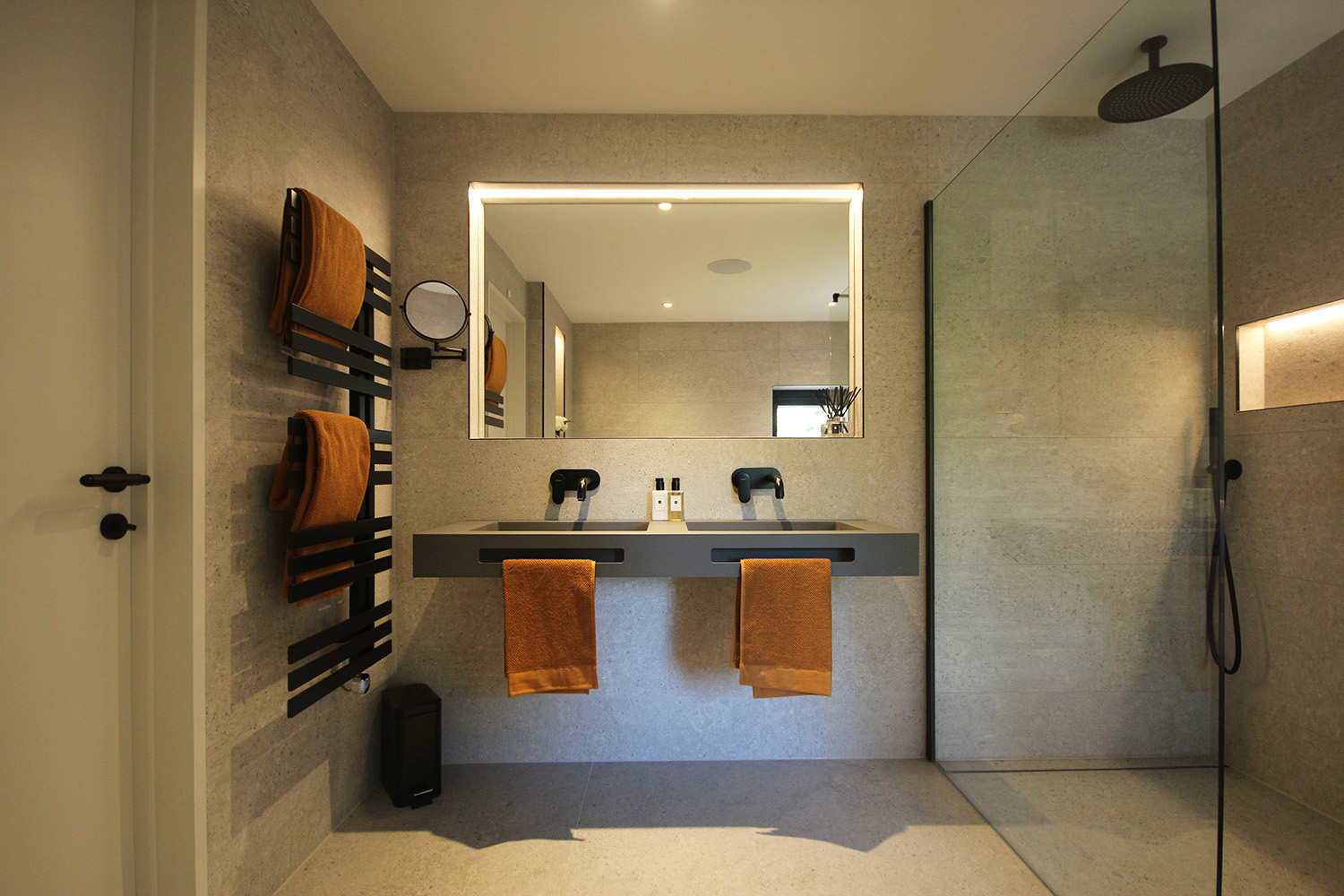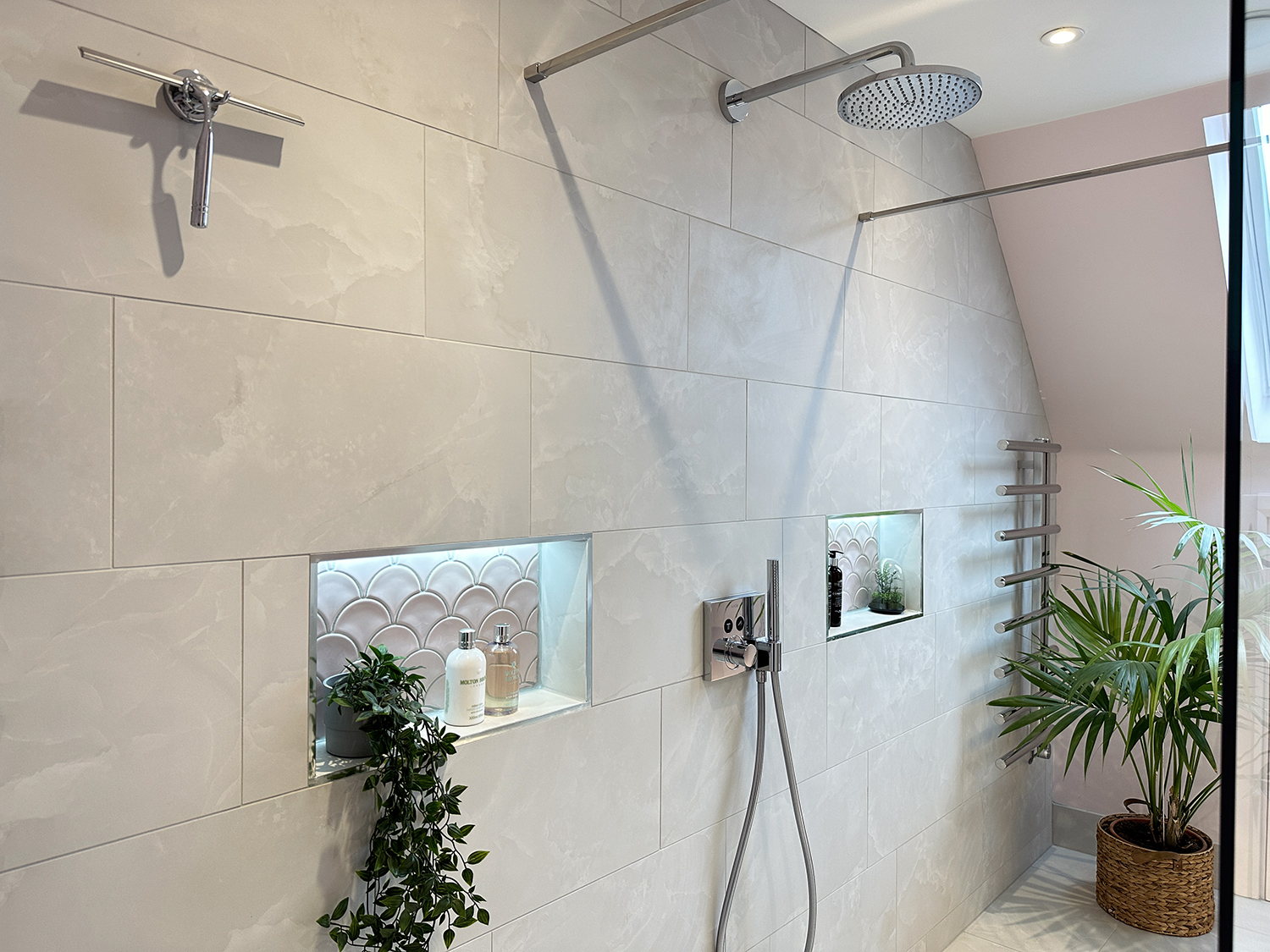Bathrooms with a colour scheme have slipped somewhat from popularity in the last couple of decades. When you think of a bathroom colour, your mind might float to an 1980’s avocado or peach furniture suite. We can say with certainty that neutrals have been the most popular bathroom concept this century. But with the rise of vintage and retro styles, and the need to add a sense of dynamism to our home spaces, colour is back on the rise. So how do you do it with elegance and flair? And most importantly, how can you make sure you’re not going to get tired of it in a couple of years?
Neutral Base
The safest way to introduce colour into your bathroom design is to start from a neutral base. Your choice of bathroom furniture and flooring is the least flexible element of the room. Think of them as the canvas of your bathroom design. By keeping these elements neutral in terms of colour, your room concept can be adapted in a variety of ways that can withstand changes and tweaks through the years.

Wall Colour
Bathroom walls are the obvious place to add colour. Bathroom walls tend to be split between clear walls and those which have some kind of waterproofing treatment such as tiles, shower wall or splashback. This means that the room naturally has the scope to add colour in a way that increases the sense of depth to the room design.
Paint
The great thing about painting the clear walls of your bathroom is that it’s really easy to change if you fancy an update in the future. The colour that you choose to paint your bathroom walls will be a lead feature in your overall concept, so it’s worth giving it some thought.
Which colour?
Calming pastels are popular, such as sage green or muted blue. These cooler colours create a sense of sanctuary and balance. Current trends are leaning towards warm colour schemes, with the Pantone colour of the year being “Peach Fuzz”. Warm pinks, oranges or even deeper colours like navy and forest green create a spa-like elegance, but should be used more as accents as they are so vibrant.
Tiles
Perhaps less easy to modify, choosing to add colour with bathroom tiles can create a more subtle overall effect. Current design trends favour smaller tiles, so you have plenty of scope to mix colours, adding a strip or accent rather than a block of colour. In addition, patterned tiles are really on the rise and are a great way to add a sense of colour without it overwhelming the room.

Cabinets
The doors to your bathroom cabinets or units are easy to update as a very quick way to change the design scheme of your bathroom. If you’re planning a full bathroom refit, it’s worth thinking about the material that you choose for cabinet frontages. Gloss finishes are fantastically reflective and stylish, but are less easy to update, so neutral colours work best. You may chose a monochrome effect for your cabinets, with the view to adding colour elsewhere.
Materials
Colour isn’t only added to a room through large blocks and vibrant hues. Simply by choosing specific materials for different elements of your bathroom, you can add a more subtle sense of colour and depth.
Stone countertops
From basin surrounds to vanity units to counter space, natural stones can be a kaleidoscope of colours. There are varieties of marble and granite which are hues of pink, green and yellow. In addition, the natural graining within these stones adds hints of darker, lighter and even metallic tones. For a feel of timeless elegance, these materials are a great first port of call.
Fixtures and fittings
While chrome finishes remain popular and versatile, think about how alternative fixtures and fittings could support a bathroom colour scheme. For example, black taps and electrical surrounds look fantastic against contemporary schemes that use vibrant pops of colour. Alternatively, golds and brass highlight a sense of warmth that you might instil with a colour scheme.

Natural wood
From cabinet fronts to flooring, natural wood finishes give a sense of colour without dominating the space. Dark browns to cherry red tones to warm yellow hues keep the room feeling both natural and textured.
Lighting
One of the most important aspects of a room’s aesthetic, lighting can present and reflect colour in a multitude of ways. The principle is that lighting should operate on a number of levels. The general wash which is provided by your ceiling LEDs gives the main artificial light. Then you should feature more targeted lighting for example surrounding or behind a mirror. Additional atmospheric lighting in recessed shelving or underneath counters and surrounds adds depth and atmosphere. Smart lighting can change from warm to cool hues, or even different colours entirely.
Accessories
Decorative additions to your bathroom are both functional and give depth to a colour scheme. They’re also really easy to alter or change entirely to shift the focus of the aesthetic in the room.
Windows
Remember that it might be beneficial for smaller windows to avoid dressings in order to optimise natural light. However, larger windows may feature curtains or blinds that sit within a colour scheme.
Towels and bath mats
Invest in a range of towel and bath mat combinations that draw out a specific shade or colour within your chosen scheme.
Utensils
Soap dishes, soap dispensers, toothbrush holders, boxes and containers are all utensils that can be selected in a specific colour. This might support a colour found in your wall tiles, or contrast a wall colour to striking effect.

Greenery
Whatever your bathroom decor scheme, be it coloured or neutral, greenery is an excellent addition. Plants are calming, naturally appealing and increase the oxygen in the room.
You can introduce colour into your bathroom design in subtle or vibrant ways. So much comes down to your personal tastes and preferences. If you’re struggling with where to start or want to explore your options, just get in touch with our design experts ant Stone & Chrome.
